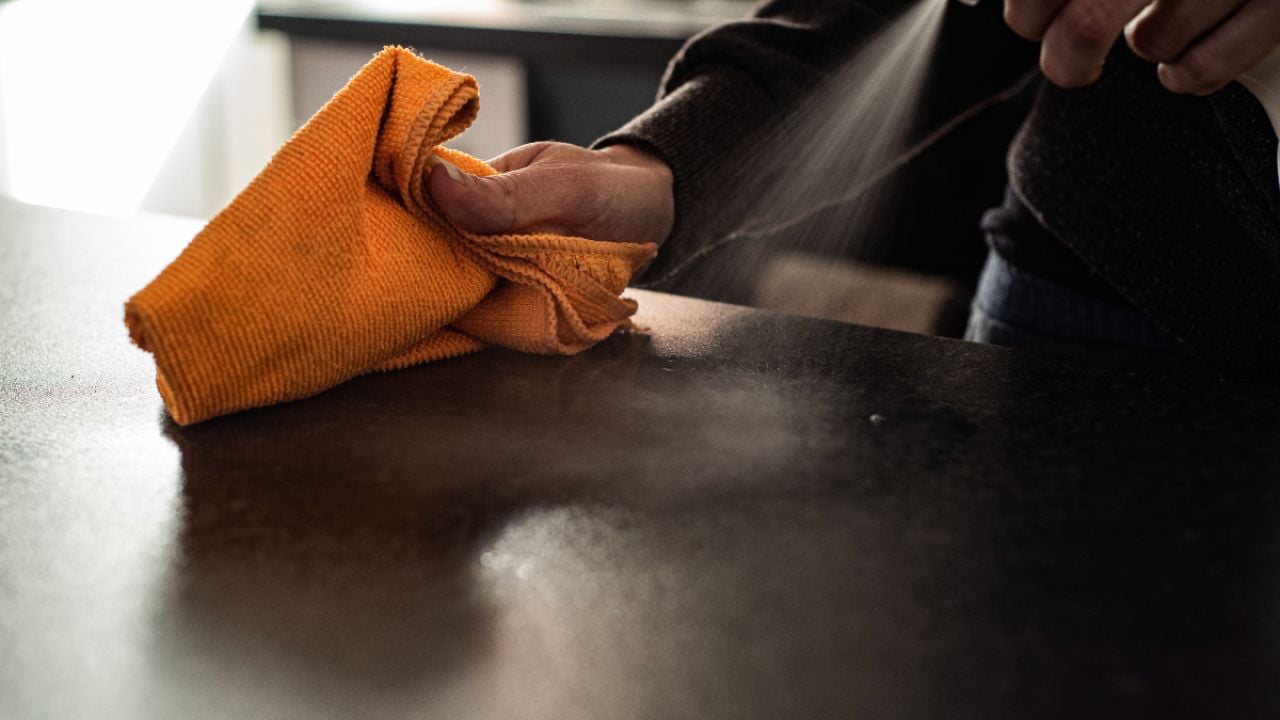
It’s that time of year when people jump on the idea of spring cleaning – getting rid of clutter and thoroughly scrubbing their living spaces. And that means hauling out the cleaning supplies.
But it’s tough to know which are safe to use. It’s important to avoid exposing yourself or your family to harmful substances, especially children, who are particularly vulnerable to potentially hazardous chemicals that might be in everyday cleaning products.
Conventional cleaning product manufacturers can use almost any ingredient of their choice, and they don’t have to fully disclose the formulas. The federal government needs to do more to protect you from exposure to harmful cleaning chemicals.
Until then, EWG is stepping in to fill the gap, highlighting some of the worst chemicals to avoid and other cleaning tips to reduce exposure to the most toxic chemicals.
Cleaning chemicals to avoid
Make sure to study cleaner ingredients labels carefully and follow instructions for using them.
Here are a few cleaning chemicals to avoid, whenever possible:
- Ethylene glycol ethers – including harsh solvents like 2-butyoxyethanol and butyoxydiglycol in soil and stain removers. They’re hazardous air pollutants linked to reproductive and developmental effects.
- Sulfuric acid and hydrochloric acid – corrosive chemicals that can cause severe skin and eye damage. They’re typically found in products like oven cleaners, drain openers, hard water stain removers and toilet cleaners.
- Quaternary ammonium compounds, or quats, found in fabric softeners and disinfectants and sanitizers. They’ve been linked to asthma as well as reproductive harm and birth defects in animals. Avoid distearyldimonium chloride, benzalkonium chloride and other ingredients ending in “-onium chloride,” as well as non-specific terms like “cationic surfactant.”
- Sodium hypochlorite, the active ingredient in chlorine bleach, which is associated with respiratory damage.
Choosing healthier cleaners
To get your place to sparkle without introducing toxic chemicals into the mix, we suggest:
Looking for the EWG VERIFIED® mark. Products carrying the EWG VERIFIED mark are produced according to the strictest standards and are free from chemicals of concern. Get to know the names of the brands with EWG VERIFIED products:
- AspenClean
- Attitude
- Blueland
- Branch Basics
- Defunkify
- Dirty Labs
- Healthy Baby
- Squeak
- The Hate Stains Co.
These brands offer dozens of currently verified products to choose from.
Consulting our guide. Let us do the heavy lifting. Consult EWG’s Guide to Healthy Cleaning, which rates over 2,500 cleaning products from “A” to “F” based on their hazard profile and manufacturing transparency. Choose products that rate A or B or that bear the EWG VERIFIED® mark. And check out our Healthy Living App for product ratings on the go.
Steering clear of ambiguous mixtures. Look for products that disclose all ingredients, including those hidden behind vague terms like “fragrance,” “surfactant” and “preservative.”
Avoiding marketing hype. Stay away from potential greenwashing, such as words like “green,” “natural” and “non-toxic.” There are no regulatory standards for these terms, but EWG’s guide to decoding labels may help.
Trying gentle cleaners first. Our Tip Sheet for Healthy Cleaning includes suggestions for healthier approaches to cleaning, akin to your grandmother’s special formula that – surprise! – really does work. Or try an all-purpose cleaner – formulated to be more gentle, yet effective – and may suffice for many cleaning tasks. Then swap in a heavier-duty product to tackle more difficult cleaning tasks, if necessary.
Other ideas for healthier cleaning
Here are some additional ways to avoid exposure to harmful chemicals in cleaning products:
- Wear gloves and other protective equipment.
- Read instructions and warnings and use your cleaning products as directed.
- Look for products that disclose all ingredients – terms like “fragrance” or “surfactant” may indicate undisclosed ingredients.
- Keep the area you’re cleaning ventilated, or wear an N95 mask to limit exposure.
- Take special care with products used for more difficult cleaning, like drain cleaners and clog removers, as harsher solutions can cause serious and permanent injury.
- Avoid combining products, such as mixing disinfectants with everyday cleaners because dangerous fumes can result.
- Store all cleaning products safely when they’re not in use.



